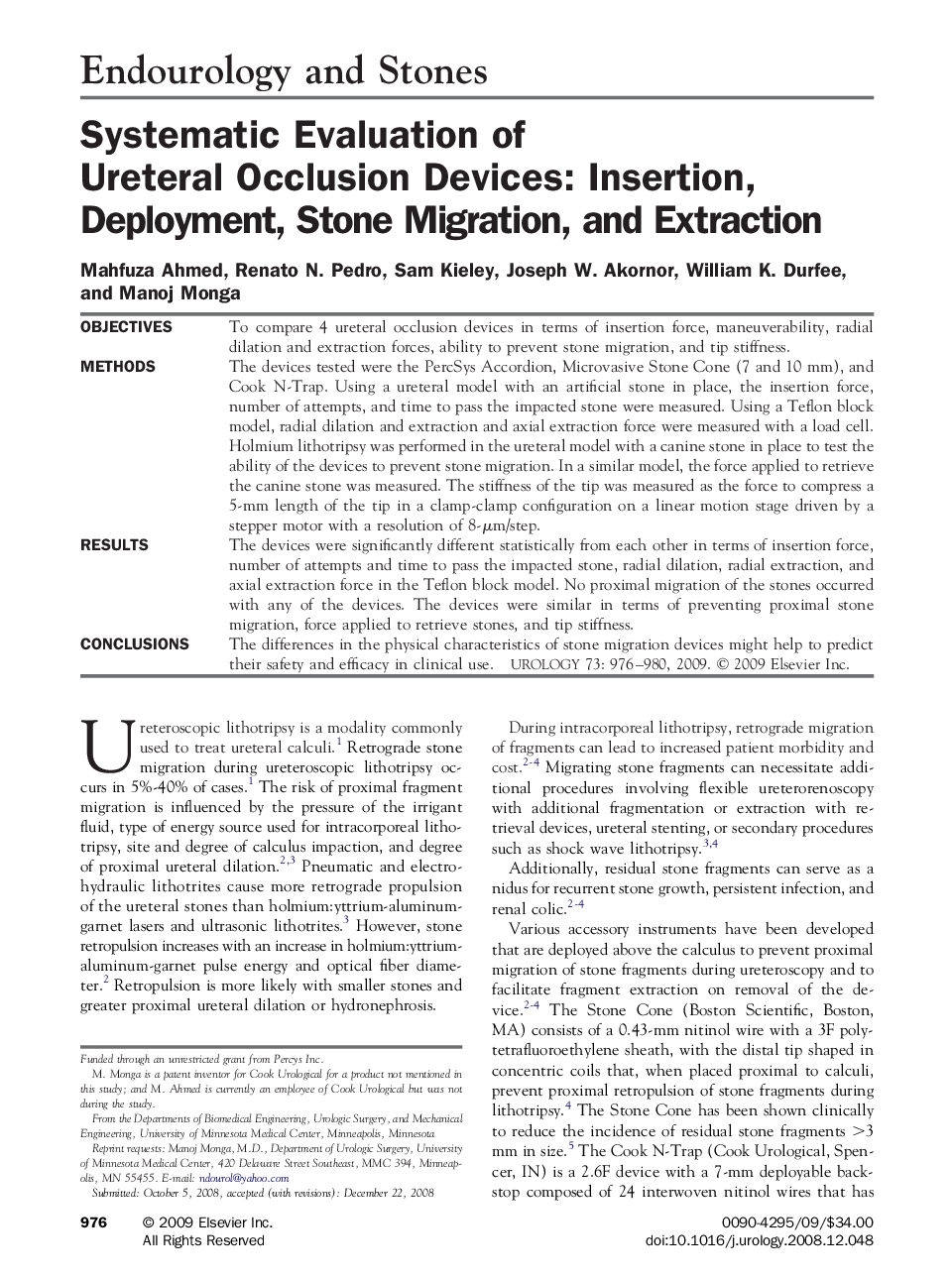| Article ID | Journal | Published Year | Pages | File Type |
|---|---|---|---|---|
| 3903029 | Urology | 2009 | 5 Pages |
ObjectivesTo compare 4 ureteral occlusion devices in terms of insertion force, maneuverability, radial dilation and extraction forces, ability to prevent stone migration, and tip stiffness.MethodsThe devices tested were the PercSys Accordion, Microvasive Stone Cone (7 and 10 mm), and Cook N-Trap. Using a ureteral model with an artificial stone in place, the insertion force, number of attempts, and time to pass the impacted stone were measured. Using a Teflon block model, radial dilation and extraction and axial extraction force were measured with a load cell. Holmium lithotripsy was performed in the ureteral model with a canine stone in place to test the ability of the devices to prevent stone migration. In a similar model, the force applied to retrieve the canine stone was measured. The stiffness of the tip was measured as the force to compress a 5-mm length of the tip in a clamp-clamp configuration on a linear motion stage driven by a stepper motor with a resolution of 8-μm/step.ResultsThe devices were significantly different statistically from each other in terms of insertion force, number of attempts and time to pass the impacted stone, radial dilation, radial extraction, and axial extraction force in the Teflon block model. No proximal migration of the stones occurred with any of the devices. The devices were similar in terms of preventing proximal stone migration, force applied to retrieve stones, and tip stiffness.ConclusionsThe differences in the physical characteristics of stone migration devices might help to predict their safety and efficacy in clinical use.
